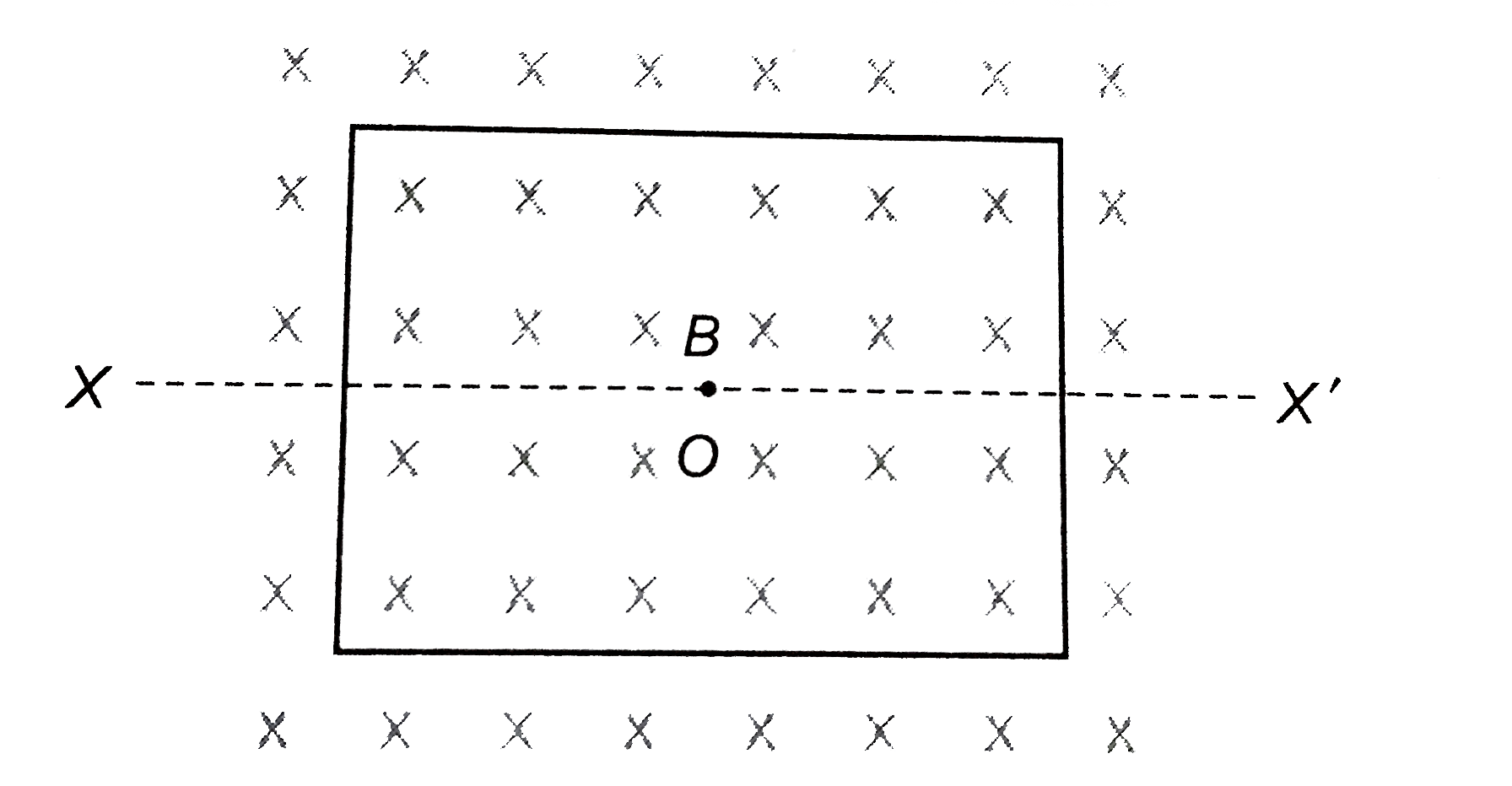A magnetic field set up using Helmholtz coils (described in Question 16 above) is uniform in a small region and has a magnitude of . In the same region, a uniform electrostatic field is maintained in a direction normal to the common axis of the coils. A narrow beam of (single species) charged particles all accelerated through enters this region in a direction perpendicular to both the axis of the coils and the electrostatic field. If the beam remains undeflected when the electrostatic field is , make a simple guess so to what the beam contains. Why is the answer not unique?
Magnetic field,
Accelerating voltage,
Electrostatic field,
Mass of the electron =m
Charge of the electron =e
Velocity of the electron = v
Kinetic energy of the electron
...(1)
Since the particle remains undeflected by electric and magnetic fields, we can infer that the electric field is balancing the magnetic field.
...(2)
Putting equation (2) in equation (1), we get
The value of specific charge e/m is equal to the value of deuteron or deuterium ions. This is not a unique answer. Other possible answers are , etc.
Topper's Solved these Questions
Similar Questions
A magnetic field set up using Helmholtz coils is uniform in a small region and has a magnitude of 0.75 T. In the same region, a uniform electrostatic field is manitained in a direction normal to the common axis of the coils. A narrwo beam of (single species) charged particles all accelerated through 15 kV enters this region in a direction perpendicular to both the axis of the coils and the electrostaic field. If the beam remains undeflected when the electrostatic field is 9.0×10−5Vm−1, make a simple guess as to what the beam contains. Why is the answer not unique?
View SolutionProtons are shot in a region perpendicular to a uniform magnetic field in a region :
View Solution
Knowledge Check
- Question 1 - Select One
A charged particle entering a magnetic field from outside in a direction perpendicular to the field
Acan never complete one rotation inside the fieldBmay or may not complete one rotation in the field depending on it angle of entery into the fieldCwill always complete exactly half of a rotation before leaving the fieldDmay allow a helium path depending o its angle of entery into the field - Question 2 - Select One
A n electrically charged particle enters into a uniform magnetic induction field in a direction perpendicular to the field with a velocity v then it travels
Aina straight line without accelerationBwith force in the direction of the fieldCin a circular path with a radius directly proportional toDin a circular path with a radius directly proportional to its velocity - Question 3 - Select One
A charged particle is projected perpendicular to the direction of uniform electric field. It's path in the region of the field will be
AellipticBlinearCcircularDparabolic
A narrow beam of protons and deutrons, each having the same momentum, enters a region of uniform magnetic field directed perpendicular to their direction of momentum. The ratio of the radii of the circular paths described by them is
View SolutionA rectangular coil is placed in a region having a uniform magnetic field B perpendicular to the plane of the coil. An emf will not be induced ion the coil if the
 View Solution
View SolutionIn a region where both non-zero uniform electric field and magnetic field coexist, the path of a charged particle
View SolutionA narrow beam of protons and deutrons, each having the same momentum, enters a region of uniform magnetic field directed perpendicular to their direction of momentum. The ratio of the radii of the circular paths described by them is
View SolutionAn proton and an electron simultaneously enter into a region in which a uniform magnetic field acts normal to the motion of both the particles. The frequency of revolution of
View Solution

